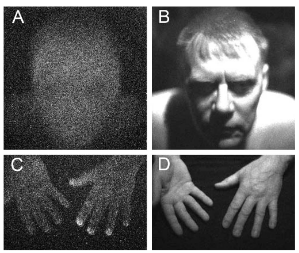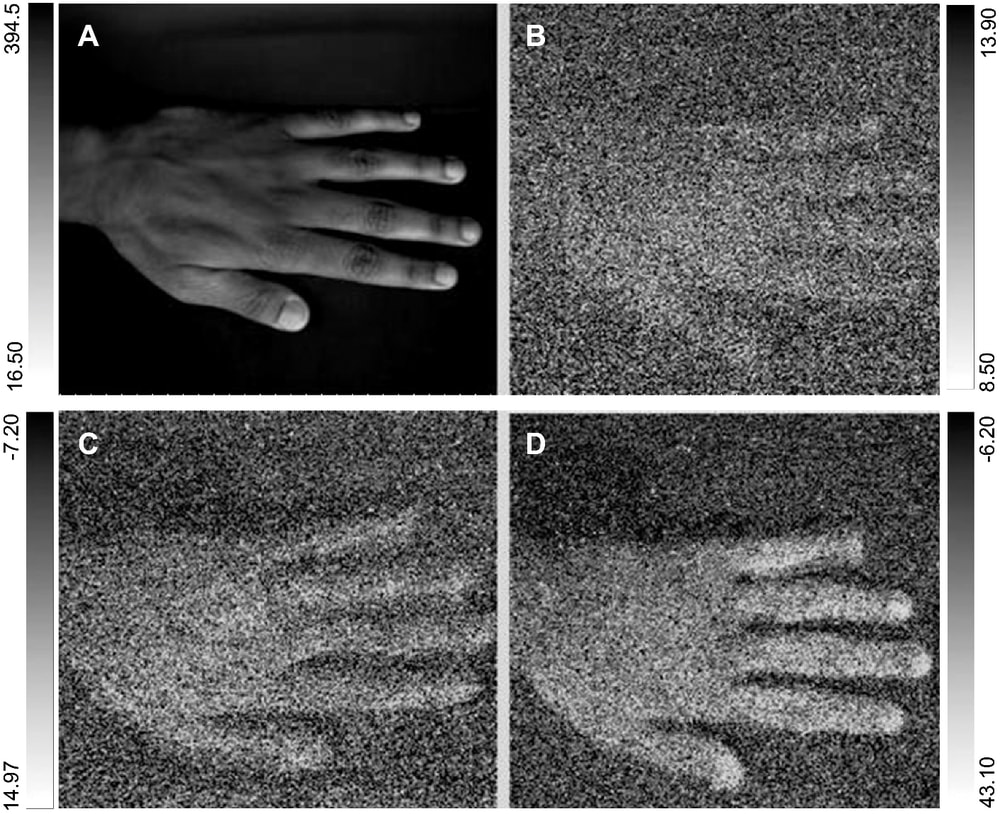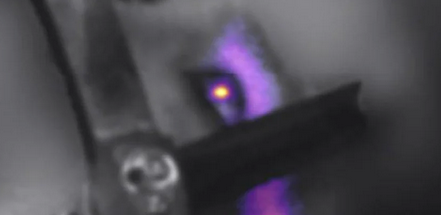Biophoton Communication: Can Cells Talk Using Light?

A growing body of evidence suggests that the molecular machinery of life emits and absorb photons. Now one biologist has evidence that this light is a new form of cellular communication. Nobody is quite sure how cells produce biophotons but the latest thinking is that various molecular processes can emit photons and that these are transported to the cell surface by energy carying excitons.
Human Ultraweak Photon Emission: Key Analytical Aspects, Results and Future Trends – A Review

Living systems emit what is called ultraweak photon emission (UPE). This visually undetectable phenomenon has only been studied in humans for the last 30 years, finding that UPE is a complex process depending on multitude factors. Considering previous literature, this review discusses the current trends in the analysis of in vivo UPE from human beings.
Photos from "Anatomic characterization of human ultra-weak photon emissionwith a moveable photomultiplier and CCD imaging"
Bizarre Phenomenon of Light Flashing From Human Eyes Caught on Camera For First Time

Some radiation therapy patients report seeing flashes of light in front of their eyes during treatment – even when their eyes are closed. Now this long-standing mystery may have been solved, thanks to this weird effect being caught on camera for the first time.
Studies by Alexander Gurwitsch in the 1920’ s with onion root cells revealed the phenomenon of mitogenetic radiation. Subsequent works by Popp, Van Wijk, Quickenden, Tillbury, and Trushin have demonstrated a link between Gurwitsch’s mitogenetic radiation and the biophoton, emissions of light correlated with biological processes. The present study seeks to expand upon these and other works to explore whether biophoton emissions of bacterial cultures is used as an information carrier of environmental stress. Bacterial cultures (Escherichia coli and Serratia marcescens) were incubated for 24 hr in 5 ml of nutrient broth to stationary phase and cell densi‐ties of ~107 cells/mL. Cultures of E. coli were placed upon a photomultiplier tube housed within a dark box. A second bacterial culture, either E. coli or S. marcescens, was placed in an identical dark box at a distance of 5 m and received injections of hydrogen peroxide. Spectral analyses revealed significant differences in peak fre‐quencies of 7.2, 10.1, and 24.9 Hz in the amplitude modulation of the emitted bio‐photon signal with respect to whether a peroxide injection occurred or not, and whether the species receiving the injection was E. coli or S. marcescens. These and the subsequent results of discriminant functions suggest that bacteria may release bio‐photons as a non‐local communication system in response to stress, and that these biophotons are species specific.